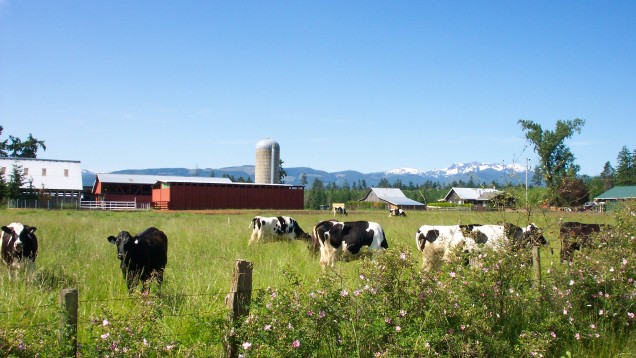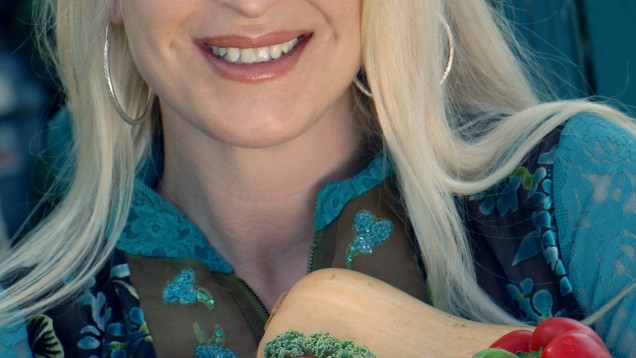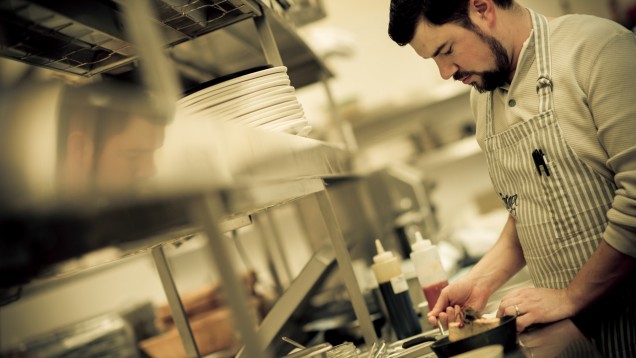
At the foot of Mount Arrowsmith on Vancouver Island, you’ll find some very happy cows. That’s where the farm Little Qualicum Cheeseworks produces 16 kinds of washed-rind cheeses – and their sister fruit winery and farm produce just about everything else you could want to enjoy with your cheese. Farm owner Nancy Gourlay talked to us about sustainable farming, the business of making cheese, and gave us – oh, only the best cheese cake recipe you will ever taste!
Buy Local Eat Natural: What initially inspired you to start a dairy farm and get into cheese-making?
Nancy Gourlay: Our initial inspiration came from living in Switzerland, where they make the best cheese in the world (in my opinion!). One day, we were having lunch in an alpine restaurant with Swiss colleagues and right in the restaurant they rolled out a copper vat, filled it with milk and started making cheese over a fire. I was enthralled and right there we got the idea to make cheese in Canada, in “the shadow of Mount Arrowsmith”. Making it with the milk from our own cows just sounded like a lot of fun. Ah, ignorance is bliss!
BLEN: We love your Cheese-Making 101 post where you explain your cheese making process – and since we’re obviously big locavores, it made us curious: which of your cheeses are produced with natural yeasts and moulds? (And what kind of taste does that produce?)
NG: I think it’s safe to say that all of our cheeses are influenced by natural yeasts and moulds, especially as they are present in the air all around us. Although we use laboratory-produced dairy starter cultures (by law), our milk, particularly our raw milk, is full of natural flora from the soil, animals, and air of the farm. That’s why the milk from our cows tastes different than the milk from a European cow. Different grass, different soil, different water all lead to unique cheese, even if we use exactly the same starter cultures. Fun, eh?!
BLEN: How has the business grown since you started making cheese? (Can you tell us more about the store and your winery?) And we love your handy list of suppliers for those of us not lucky enough to visit the farm – which cheese should we try first on our next trip to the grocery store?
NG: The business has grown slowly but surely over the last 13 years – I see us as having six businesses under one umbrella really. We’ve got the “field” staff who look after the grass, irrigation, harvesting, fences, and all those decisions, then the herd staff who make sure the cows are healthy and producing good milk. Then our cheese makers have a unique skill-set and the packaging staff have a whole set of challenges, too. Our local farm-gate store is run by, yet another, dedicated and creative team.
Our farm-gate store is really fun for visitors though as this is where they can take their time, taste everything first, and even watch the cheese making through the window. For those lucky to arrive around 4 pm it’s possible to stick your head in the milking parlour door and say, “Hi,” to the girls as they’re being milked. For those who can’t make it to the farm, you can often find us at your local farmers’ market in the summer, or pick up our Brie at your grocery store!
And once you get your hands on their cheese, reward yourself by testing out their much-loved recipe for Honey and Fromage Frais Cheesecake best consumed while you enjoy this adorable video of LQC’s cows frolicking (really, truly, frolicking).

